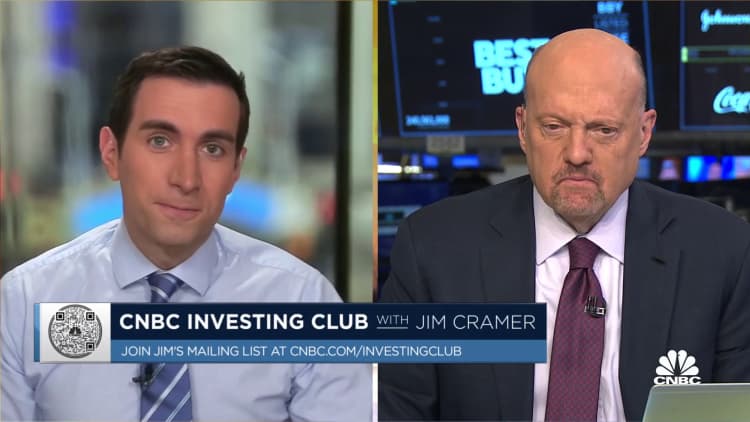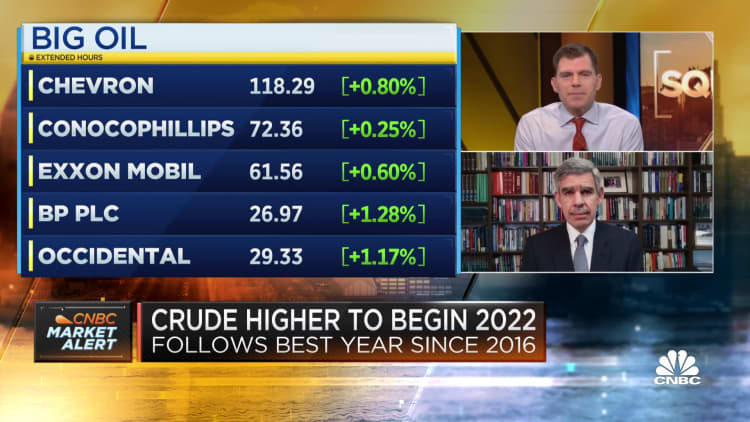If everything goes according to plan, the Federal Reserve in a little over two months will enact its first rate increase in three years, a move policymakers deem necessary and that markets and the economy are grudgingly coming to accept.
The Fed last raised rates in late 2018, part of a "normalization" process that happened in the waning period of the longest-lasting economic expansion in U.S. history.
Just seven months later, the central bank retreated as the expansion looked increasingly fragile. Eight months after that initial cut in July 2019, the Fed was forced to roll back its benchmark borrowing rate all the way to zero as the nation confronted a pandemic that threw the global economy into a sudden and shocking tailspin.

So as officials prep for a return to more conventional monetary policy, Wall Street is watching closely. The first trading day of the new year indicated the market is willing to keep pushing higher, in the midst of the gyrations that have greeted the Fed since it indicated a policy pivot a month ago.
"When you look back historically on the Fed, it's usually multiple tightenings before you get in trouble with the economy and the markets," said Jim Paulsen, chief investment strategist at the Leuthold Group.
Paulsen expects the market to take the initial hike – likely to be enacted at the March 15-16 meeting – without too much fanfare, as it's been well telegraphed and will still only bring the benchmark overnight rate up to a range of 0.25%-0.5%.
"We've developed this attitude on the Fed based on the last couple decades where the economy was growing at 2% per annum," Paulsen said. "In a 2% stall-speed economy world, if the Fed even thinks about tightening it's damaging. But we don't live in that world anymore."
Fed officials at their December meeting penciled in two additional 25-basis-point hikes before the end of the year. A basis point is equal to one one-hundredth of 1 percentage point.
Current pricing in the fed funds futures market points to about a 60% likelihood of a hike in March, and a 61% probability that the rate-setting Federal Open Market Committee will add two more by the end of 2022, according to the CME's FedWatch Tool.
Those subsequent hikes are where the Fed could see some blowback.
The Fed is hiking rates in response to inflation pressures that are running by some measures at the fastest rate in nearly 40 years. Chairman Jerome Powell and most other policymakers spent much of 2021 insisting that prices would ease soon, but conceded toward the end of the year that the trend was no longer "transitory."
Engineering a landing
Whether the Fed can orchestrate an "orderly coming down" will determine how markets react to the rate hikes, said Mohamed El-Erian, chief economic advisor at Allianz and chair of Gramercy Fund Management.
In that scenario, "the Fed gets it just right and demand eases a little bit and the supply side responds. That is sort of the Goldilocks adjustment," he said Monday on CNBC's "Squawk Box."

However, he said the danger is that inflation persists and rises even more than the Fed anticipates, prompting a more aggressive response.
"The pain is already there, so they are having to play massive catch-up, and the question is at what point do they lose their nerve," El-Erian added.
Market veterans are watching bond yields, which are expected to indicate advanced clues about the Fed's intentions. Yields have stayed largely in check despite expectations for rate hikes, but Paulsen said he expects to see a reaction that ultimately could take the benchmark 10-year Treasury to around 2% this year.
At the same time, El-Erian said he expects the economy to do fairly well in 2022 even if the market hits some headwinds. Likewise, Paulsen said the economy is strong enough to withstand rate hikes, which will boost borrowing rates across a wide swath of consumer products. However, he said he figures a correction will come in the second half of the year as rate increases continue.
But Lisa Shalett, chief investment officer at Morgan Stanley Wealth Management, said she thinks market turbulence would be more pronounced even as the economy grows.
Markets are coming off a prolonged period of "a long decline in real interest rates, which allowed stocks to break free from economic fundamentals and their price/earnings multiples to expand," Shalett said in a report for clients.
"Now, the period of declining fed funds rates which began in early 2019 is ending, which should allow real rates to rise from historic negative lows. This shift is likely to unleash volatility and prompt changes in market leadership," she added.
Investors will get a closer look at the Fed's thinking later this week, when minutes of the December FOMC meeting are released Wednesday. Of particular interest for the market will be discussions not only about the pace of rate hikes and the decision to taper asset purchases, but also when the central bank will start reducing its balance sheet.
Even as the Fed intends to halt the purchases in the spring, it will continue to reinvest the proceeds of its current holdings, which will maintain the balance sheet around its current $8.8 trillion level.
Citigroup economist Andrew Hollenhorst expects balance sheet reduction to start in the first quarter of 2023.


